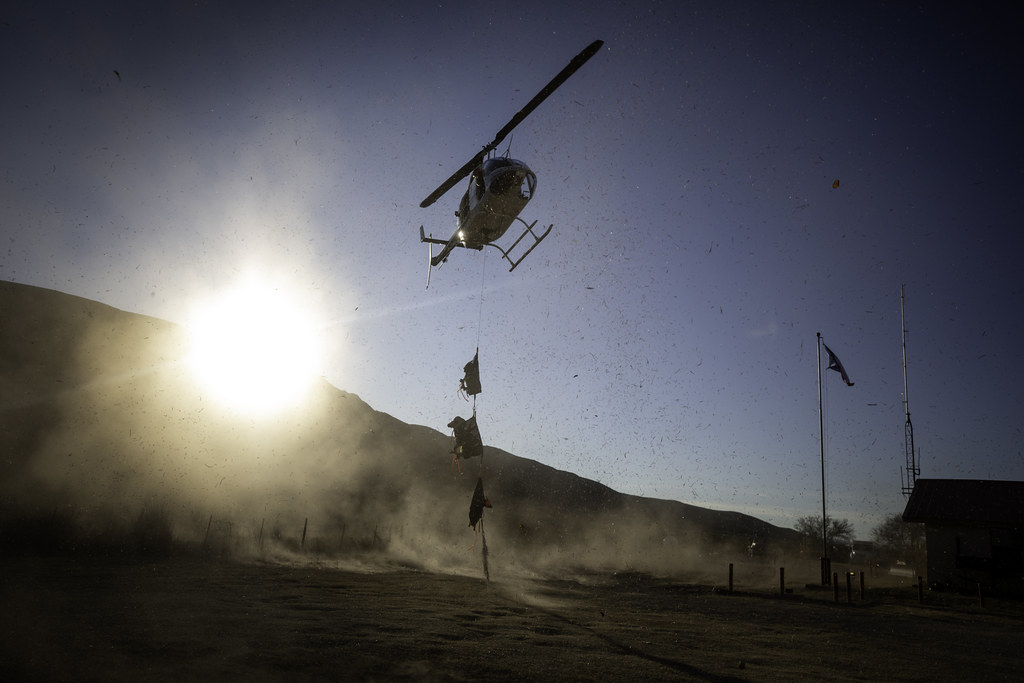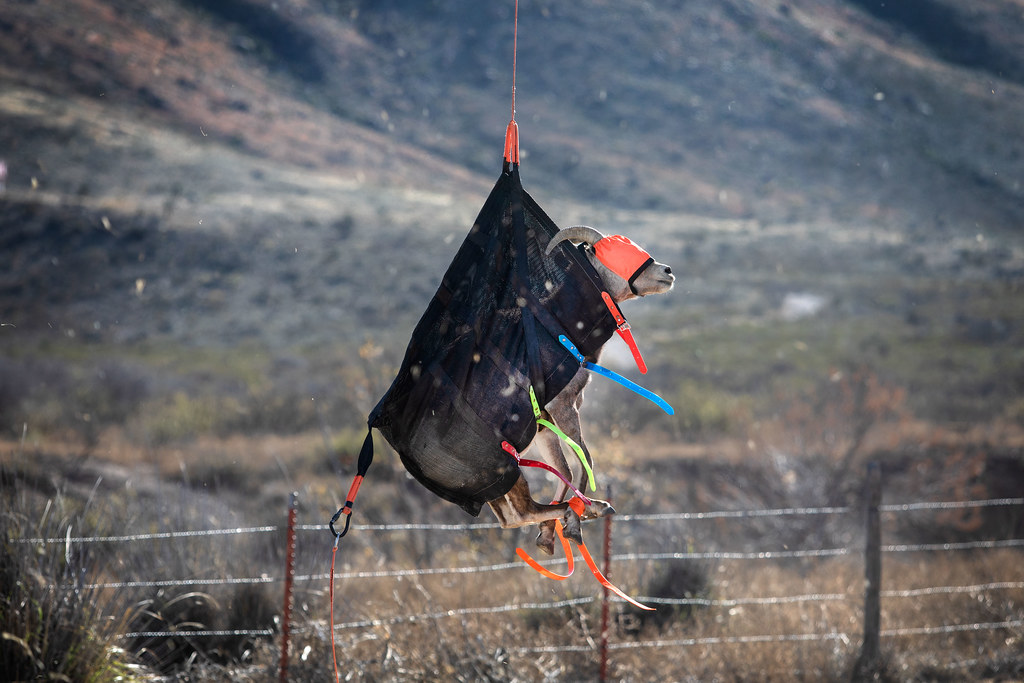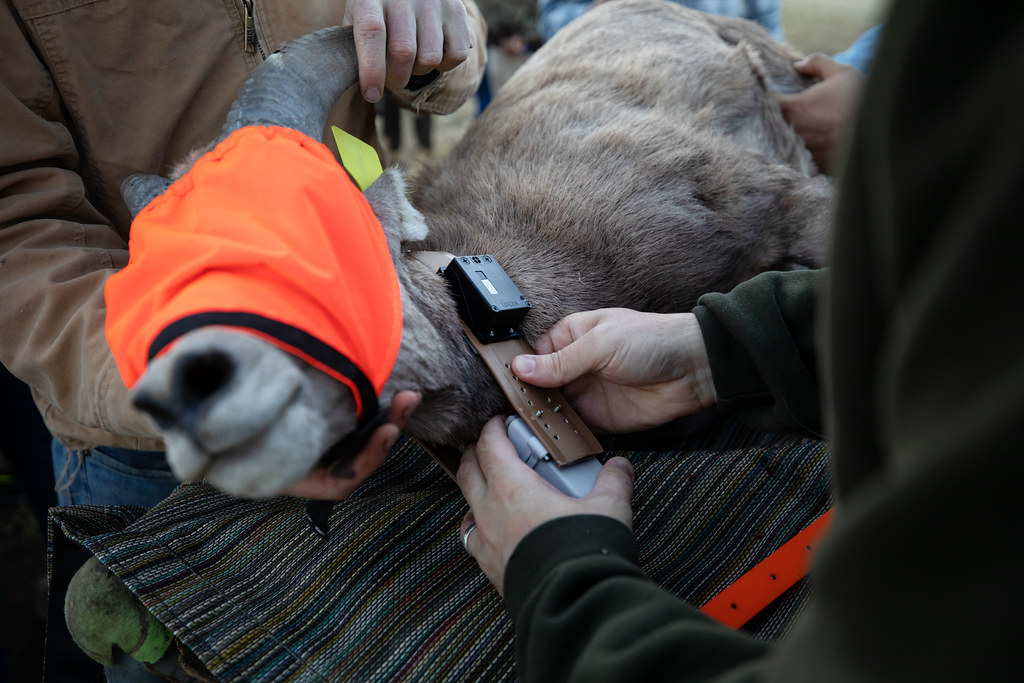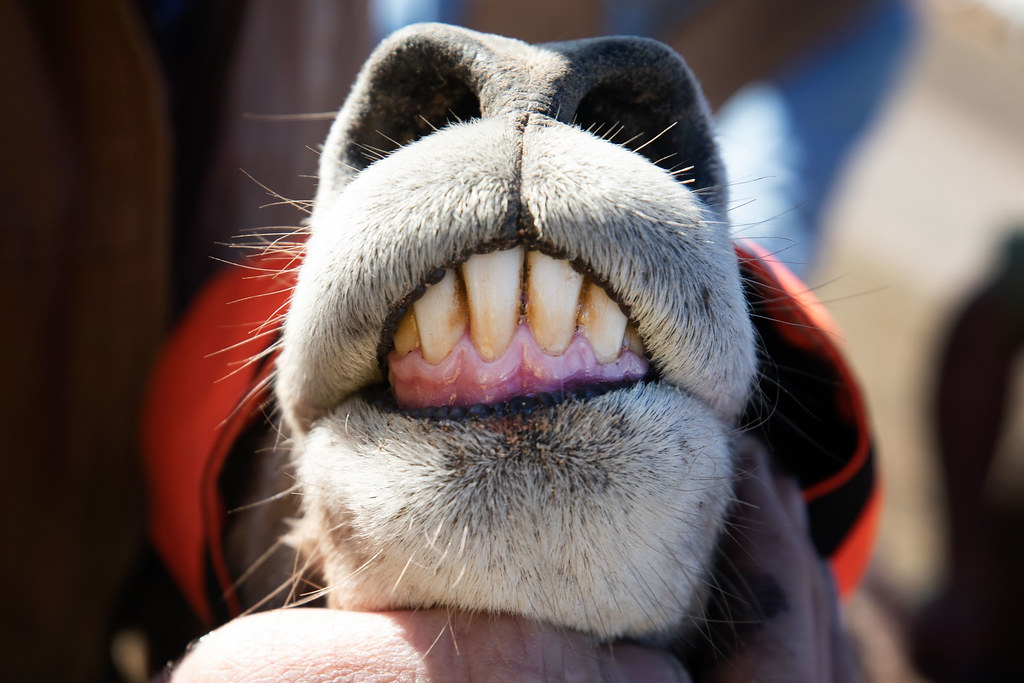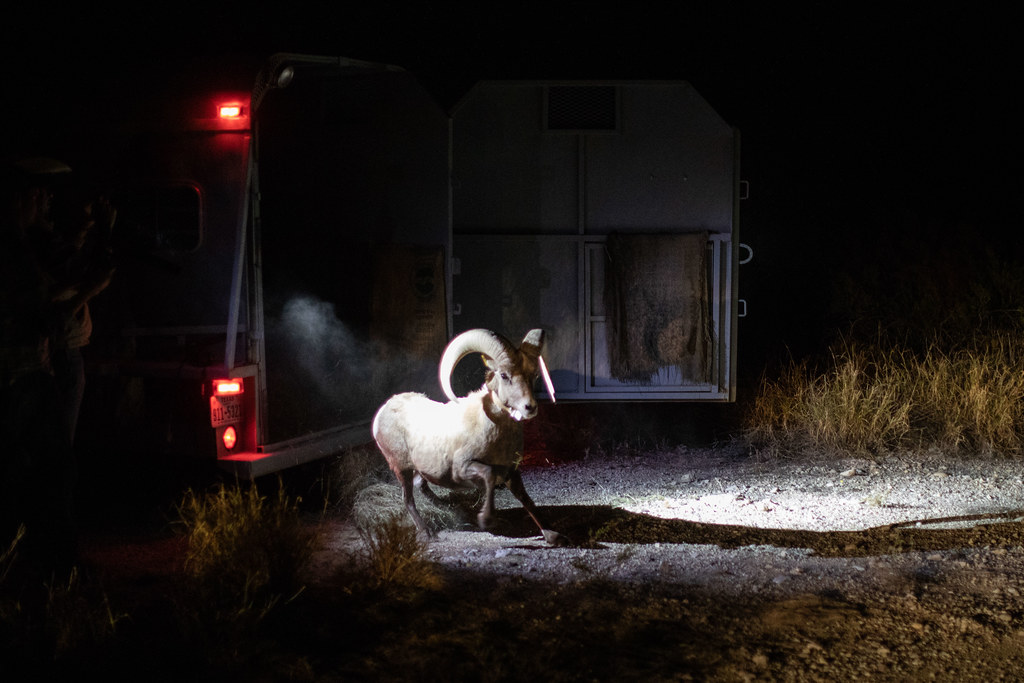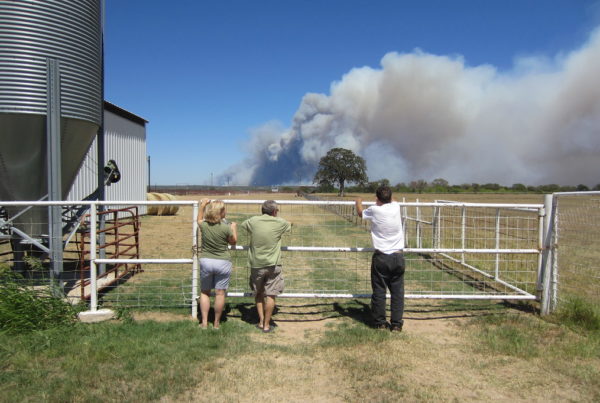It’s a clear, cool morning in West Texas, and about 50 people are watching a helicopter wind its way around the south side of Elephant Mountain – a brown, flat-topped summit about 30 miles south of Alpine. The sun isn’t all the way up yet, but you can tell that the helicopter is hauling some unusual cargo.
“Look like we got some sheep coming in,” says Bob Dittmar, the state wildlife veterinarian for the Texas Parks and Wildlife Department. “Looks like we’ve got some slung in there.”
Dangling about 15 feet from the bottom of the helicopter are two desert bighorn sheep. It’s early, but they’ve already had quite a day. Capturing sheep by helicopter requires flying close enough to them to catch them in a net. Then a crew member called a mugger jumps out of the helicopter, blindfolds the sheep, and ties their legs together. Once the animals are immobilized, the mugger wraps them in a full-body sling, which is then attached to the cord dangling below the helicopter.
From there, the sheep are flown to the drop-off point. Today, that’s a barren patch at the base of Elephant Mountain. The helicopter’s blades kick up a thick haze as the pilot, Earl Watters, gingerly lowers the sheep to the ground. They touch down, tip over, and wait. There’s not much else for them to do.
Back from the dead
Desert bighorns are picky when it comes to habitat. But they’ve thrived on Elephant Mountain.
“Elephant’s been a very successful breed site,” Dittmar says. “That probably combines good habitat, good management, and just a little bit of luck.”
They’ve been a little too successful, in fact. The most recent census of the species showed about 185 bighorns on the mountain. But there’s not enough food or space to support that many sheep. Thus, the helicopter – it’s part of a huge and complex operation by Texas Parks and Wildlife to relocate some of Elephant Mountain’s bighorns. The department rarely does this, but it’s critical to the species’ long-term survival in Texas. The plan is to catch 74 of the sheep, gather as much data about them as they can, and then release them at Black Gap Wildlife Management Area, 50 miles to the southeast.
“It’s helping the population here at Elephant Mountain by alleviating the browsing pressure, and helping…augment the population at Black Gap,” says Froylán Hernández, the desert bighorn sheep program leader for Texas Parks and Wildlife.


